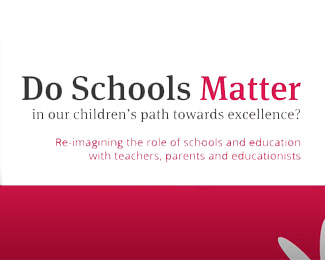Making Every Lesson Count
The process of trying to understand what makes successful classroom practices sometimes seem to be very challenging and complicated. Yet teachers across countries and millennia seemed to have managed pretty well. So, what do successful teachers do? What do they do that captures the imagination of the students and motivate them to do the things that improve their learning? Successful teaching demands an understanding of the students’ mental processes which is not isolated to the classroom.
Students’ mental processes:
Students’ mental operations are in action while learning. It may often move in non-linear trajectories and go from understanding to prediction level. For e.g., studies suggest that repetition helps learning. However, having students repeat long-division problems until they have mastered the process will be terrible for motivation. With too much repetition, students may stop trying due to lack of motivation. Understanding students’ cognitive process could make teaching much easier and relevant. Teachers would need to align their teaching style to the needs of the students keeping in mind the teachers’ own unique individual traits.
Why is it difficult to make classrooms engaging for students?
Most teachers feel excitement and passion while teaching students, although they may often have great difficulty in inspiring them. For example, when teachers engage students in the classrooms while students sit brightly at their desks with their eyes lit up, minds alert, ready to learn, a proper learning environment is created. However, if the lesson is not sufficiently engaging for every student, and they are merely praised for successful completion of the lesson, deep learning may not happen. If the lesson does not push the minds of the students there is no pleasure in simply knowing the answer or getting the answer instantly. Students’ progression does not depend merely on praise but on intrinsic rewards that comes from challenging tasks successfully completed. This is where differentiated instruction keeping in mind the learning capabilities of every student and its proper execution comes into play. But creating differentiated instruction may not be easy. It challenges teachers’ own skill set about teaching altogether. Often teachers view that they are trained not to give rigorous tasks to students according to the capabilities of each of their students. However, to be honest these teaching skills do matter. The mastery of skills without a clear vision of “What are we learning this chapter for?” is also not enough.
What should teachers do?
People are naturally curious and enjoy mental work if they are successful. But curiosity is fragile. If schoolwork is difficult and most of the time students become unsuccessful, they stop studying the chapters. Some of the essential elements linked with the strongest student outcomes are:
- Teachers having strong understanding of their subject
- Teaching skills such as effective questioning, reviewing previous learning, concrete and effective feedback.
Expert teaching requires the following building blocks:
- ‘Challenge’ all students so that they have high expectations of what they can achieve;
- ‘Explain’ so that students acquire new knowledge and skills;
- ‘Modelling’ so that students know how to apply the knowledge and skills;
- ‘Perfect Practice’ so that learning becomes steady and permanent;
- ‘Questioning’ so that students are made to think hard with breadth, depth and accuracy;
- ‘Feedback’ so that students are clear about their understanding and misconceptions and further develops their knowledge and skills.
The Building Blocks
A. Challenging the student
Story A: Rita is a hardworking and sincere student from an underprivileged background. In her primary learning, she is at the bottom of basics – reading, writing and arithmetic. At her secondary classes, she finds difficulty in many subjects. Teachers’ expectation is very little and she is rarely challenged in her class. In board final, she gets grade E.
Story B: Ankit, a teacher, prepares his lesson photosynthesis well and delivers a well-prepared talk with full enthusiasm. The classroom was neat, quiet. When the bell rang students were wondering “what do I have to do with photosynthesis?”
How to challenge students:
- Making it clear why the topic is being discussed. Teachers should understand that topics are primarily a means to an end which is developing thinking skills. It has another aim – Progression.
- Setting the bar of expectation high.
- Preparing each lesson that challenges every student.
- Scale them and adjust the lesson.
- Redrafting their writing. Unless students know how to write critically they won’t be able to convey their ideas convincingly.
- Embedding challenges in the long run.
- Challenge students to pursue their subjects beyond classrooms.
B. Explaining
Learning is constructed from old knowledge. The following story of a fish can be compared to the position of students when they learn:
“Fish is Fish”- A story by Leo Lionni There was a fish and a tadpole who shared the same pond. They were friends and grew together playing around the pond. One fine day the tadpole left the pond as he became a frog. The fish was very unhappy and tried to find his whereabouts. The frog came back after a few months learning about the fantastic world outside. The frog went on to describe the world. He described about birds having a wing and two legs. The fish imagined a bird as:
 The fish imagined a bird
The fish imagined a bird
Our students do not simply listen to what we tell them, they construct their own meaning out of their limited experience, just as the fish in the story! The challenge for teachers is to help students analyse, question, evaluate the matter that is being discussed. For example, teachers may ask why the fish does not explore the world outside just as the frog? Is the fish inferior because he cannot breathe outside water? With older kids, teachers may ask – whether the frog should make the fish understand that a bird is not really a fish with wings but something different? Is it possible, at all, with the limited exposure of the fish to make it ‘know’ what a bird is really like? Good explanation should draw in students, make them think, helping them become active rather than passive listeners.
What should be the basis of classroom explanation?
- Start from students’ existing knowledge and experience
- Several new ideas should not be introduced together
- Complex ideas should be presented in clear and simple manner
- Explanation should not be for a long time at a stretch. Short explanation and/or videos – 5, 10, at the most 15 minutes – depending on the context, followed by works – written, discussion, interaction – by students helps keep them engaged.
C. Modelling
Modern life serves us an endless supply of finished packaged products – television dramas, birthday cakes, designing websites, etc. It is easy to experience these without considering the process back stage. Students do not reach a high standard by only observing or listening to the explanations. They need to use and manipulate their knowledge to form the end products. They need to constantly read, write, analyse, identify and dissect the parts of a product. The product that students deliver most regularly is writing, yet we all expect them to write correctly, organically, with little explicit guidance. Modelling helps students to construct their understanding and that is why modelling is absolutely necessary to set the benchmark for excellence.
Modelling may constrain creativity and independence. To avoid this:
- Share multiple-model strategy to realise the potentiality of learning in different ways
- Ensure that modelling of extended writing is not copied
- Confirm that modelling do not replace knowledge
- Teachers should be mindful of the need to remove models and scaffolds regularly
D. Practice
Science teacher Kalki collected the papers of Class IX eagerly, as she wanted to see the progress her students have made. She felt she had taught ‘energy’ and ‘electricity’ well with extreme detail. However, when she read the answers, half of the students appeared to have forgotten everything! The other half of the group could attempt only a few questions. This made Kalki think, “Why could the students not answer? Did I teach badly or did the students not ‘study’?”
The basic premise is that student needs to practice carefully, deliberately. As American Football legend Vince Lombardi said “Practice does not make perfect. Only perfect practice makes perfect.”
What to do if my students do not enjoy practice?
- Work on the level of challenge and what the student is reasonably capable of
- Practice can be made fun through a rich range of tasks, but it must remain focused on learning
- Make children think with the help of scaffolding – heavy guidance, light guidance
- Knowing each students’ flexibility and agility academically and give them independence and autonomy in practicing
- For content heavy subjects, such as science, short and regular retrieval practice helps students to learn better
E. Questioning
Many experienced and effective teachers use verbal questioning as a potent tool in classrooms. Questioning is a technique. Good questioning always engages students to think and use known knowledge and helps transfer their understanding to form or construct new knowledge. It is important for teachers to teach understanding, rather than just knowing about the topics. Questioning makes students think for themselves, to analyse, imagine, speculate, evaluate and exposes the logic of the subjects, encourages them to use it in the right context. This specific process involves students to test their assumptions and prior knowledge.
The ground rules for adopting the technique:
- Mistakes are not shameful. Learning is about undergoing the process of understanding through mistakes
- Students are to be given enough time to think and respond. Give all children ample amount of time to think before they share their ideas, that is, remember to pause
- Include passive, reluctant students by eye contact or moving closer to them
- Getting students to guess in a class by asking a question such as “who can tell me the formula for speed?”
- Asking the wrong student at the wrong time
- Asking an open question before teaching the knowledge needed to answer it. For example, before teaching justice system, the teacher asking something like, “what’s wrong with the justice system in India?”
- Attempting to engage students who are having behavioural issues or unfocused interest.
F. Feedback
Nidhi, a high school student, seems able to achieve only a C grade across various subjects. Even when she tries real hard, she is not able to get higher than C. Her teacher comments “Keep trying hard, work well, you will get B”.
Feedback matters!
Feedback must inform students where to go next and what to improve specifically. Nidhi is unaware about the precise efforts that she requires for improvement.
- Feedback should be specific.
- Feedback should be timely.
- Even though feedback is integral to learning, it may sometimes be counterproductive if a particular student comes to expect it almost regularly.
- Different subjects require different feedback. Students should be pursued to make improvement through acting on the feedback.
- Feedback must be manageable. If the effort required to execute the feedback is tougher than the original work, feedback loses its meaning.





